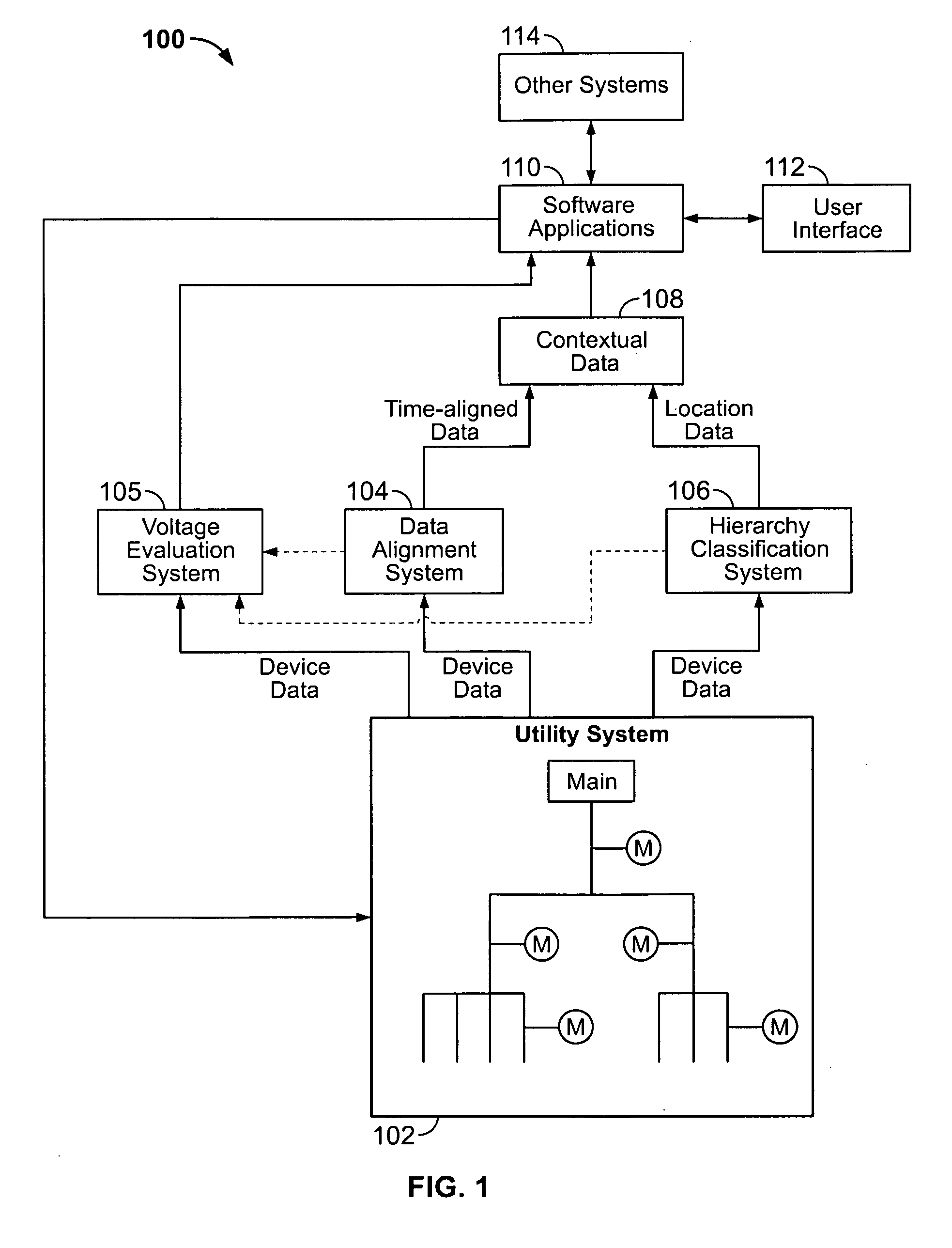Automated voltage analysis in an electrical system using contextual data
a technology of contextual data and automatic analysis, applied in the field of utility systems, can solve the problems of affecting the efficiency of the motor, affecting the viability of the motor, and elevated voltage levels that are just as damaging to the viability of the motor, and achieve the effect of quick respons
- Summary
- Abstract
- Description
- Claims
- Application Information
AI Technical Summary
Benefits of technology
Problems solved by technology
Method used
Image
Examples
Embodiment Construction
[0028]Turning now to FIG. 1, an automated data integrated monitoring system 100 is generally shown. An electrical system 102 having multiple intelligent electronic devices (hereafter “IEDs”) designated by the letter M provides data from each IED M that is communicated to an automated data alignment system 104 and an automated hierarchy classification system 106. As used herein, an IED refers to any system element or apparatus with the ability to sample, collect, or measure one or more operational characteristics or parameters of an electrical system 102. The data is aligned automatically in temporal or pseudo-temporal context in the automated data alignment system 104 and produces data that is temporally aligned such that it represents the data when it was actually seen simultaneously by the monitoring devices M in the power monitoring system 102. The hierarchy classification system 106 automatically learns the hierarchy of monitoring devices present in the utility system 102 and th...
PUM
 Login to View More
Login to View More Abstract
Description
Claims
Application Information
 Login to View More
Login to View More - R&D
- Intellectual Property
- Life Sciences
- Materials
- Tech Scout
- Unparalleled Data Quality
- Higher Quality Content
- 60% Fewer Hallucinations
Browse by: Latest US Patents, China's latest patents, Technical Efficacy Thesaurus, Application Domain, Technology Topic, Popular Technical Reports.
© 2025 PatSnap. All rights reserved.Legal|Privacy policy|Modern Slavery Act Transparency Statement|Sitemap|About US| Contact US: help@patsnap.com



